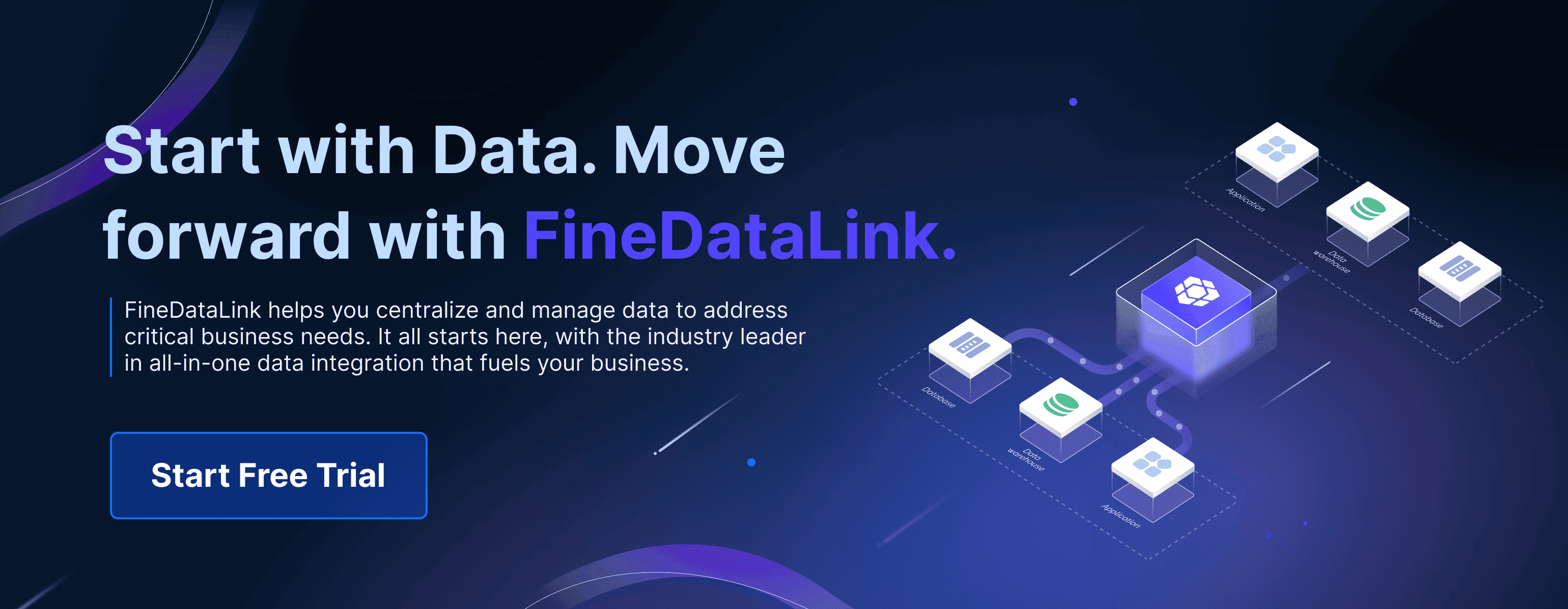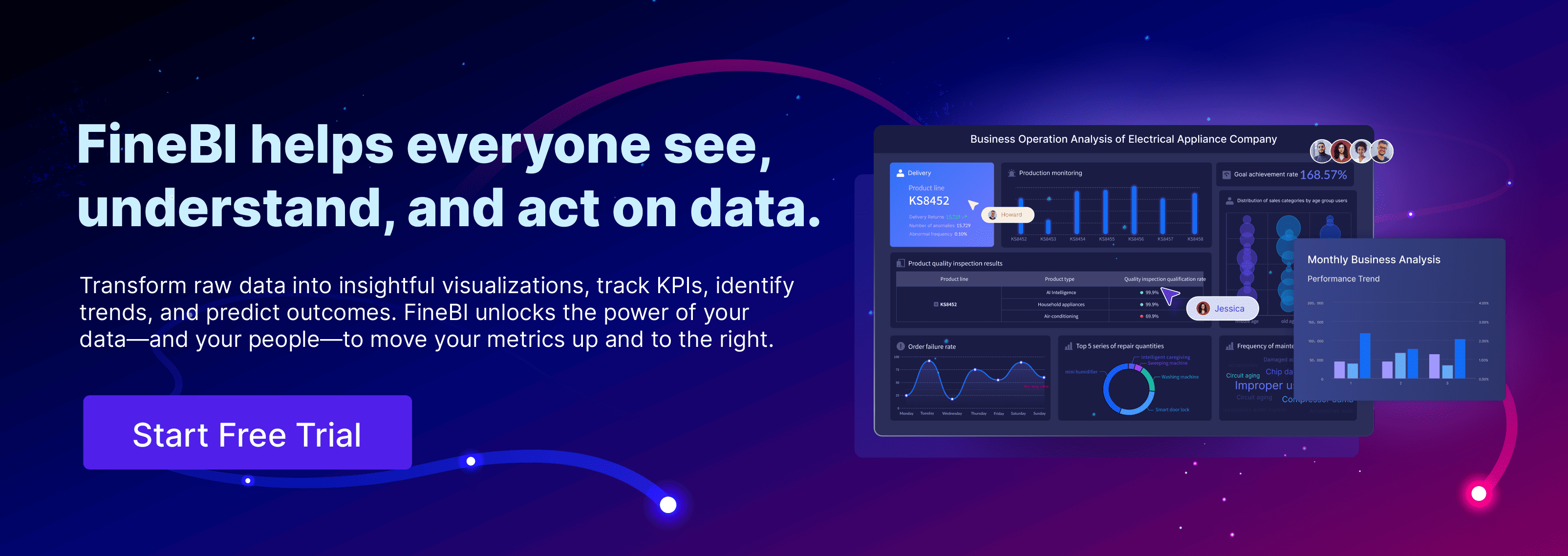HR analytics has become a cornerstone of modern business success, enabling organizations to make smarter decisions about their workforce. By leveraging data, you can uncover patterns that drive productivity, improve retention, and optimize hiring strategies. Research shows that companies using data-driven HR practices are five times more likely to make faster, better decisions. With 70% of leaders prioritizing people analytics and the global HR analytics market projected to reach $6.29 billion by 2027, the time to embrace this transformative approach is now.
Key Takeaways of HR Analytics
- HR analytics helps companies make better choices about employees using data.
- Businesses using HR analytics are five times more likely to decide faster.
- Setting clear goals for HR analytics keeps it aligned with business needs.
- Gathering correct HR data is key for good analysis and decisions.
- Predictive analytics can spot workers who might quit, helping keep them.
- Tools like FineBI make data easy to see and understand.
- Watching HR numbers often helps companies adjust to workforce changes.
- Data-based HR methods improve hiring, keeping workers, and business success.
What Is HR Analytics?
Defining HR Analytics
HR analytics refers to the systematic collection, analysis, and interpretation of data related to human resources. It helps you uncover insights that improve workforce management and organizational performance. By analyzing metrics like employee turnover, engagement levels, and recruitment efficiency, HR analytics enables you to make informed decisions that align with business goals.
A growing number of companies are shifting from descriptive approaches to predictive analytics, focusing on forecasting outcomes across HR processes. This shift highlights the increasing importance of HR analytics in modern organizations.
| Aspect | Description |
|---|---|
| Study Focus | The relationship between HR technology, HR analytics, evidence-based management (EBM), and organizational performance. |
| Key Contribution | Extends understanding of how HR analytics enhances organizational performance and links EBM to performance. |
| Importance | Establishes the strategic significance of HR analytics in organizations. |
HR Analytics vs. People Analytics vs. Workforce Analytics
Although HR analytics, people analytics, and workforce analytics share similarities, they differ in scope and focus. HR analytics primarily examines data generated from HR processes, such as turnover rates and time-to-hire. People analytics takes a broader approach, incorporating data from external sources and other functions like sales and customer satisfaction. Workforce analytics, on the other hand, focuses on optimizing workforce planning and productivity.
| Category | HR Analytics | People Analytics |
|---|---|---|
| Scope | Limited to HR processes | Extends across functions |
| Data Perspective | Historical data | Future forecasts |
| Data Sources | Internal HR process data | External and cross-functional data |
| Focus | Tactical approach | Strategic approach |
- HR analytics helps you analyze HR-specific metrics like performance ratings and recruitment efficiency.
- People analytics enables you to explore broader data sources, driving revenue and profitability.
Core Objectives of HR Analytics
HR analytics serves several key objectives that contribute to organizational success. These objectives include improving recruitment strategies, enhancing employee retention, and optimizing workforce productivity. By leveraging data, you can identify trends, predict outcomes, and implement strategies that align with business goals.
Statistical evidence supports the effectiveness of HR analytics in achieving these objectives. For example, hypotheses related to HR analytics show significant coefficients and p-values, proving their impact on organizational performance.
| Hypothesis | Coefficient | p-value | Status |
|---|---|---|---|
| H1 | 0.30 | 0.05 | Proven |
| H2 | 0.48 | 0.001 | Verified |
| H4 | 0.81 | 0.001 | Significant |
| H5 | 0.06 | 0.05 | Supported |
HR analytics empowers you to make data-driven decisions that enhance business agility and competitiveness. By focusing on measurable outcomes, you can ensure your HR strategies deliver tangible results.
Why HR Analytics Is Essential for Modern Businesses
The Shift to Data-Driven HR Practices
Organizations today are embracing a data-driven approach to HR, transforming how decisions are made. By leveraging HR analytics, you can move beyond intuition and base your strategies on actionable insights. This shift allows you to identify trends, predict outcomes, and implement solutions that align with your business objectives.
Companies like Google, IBM, and Unilever have demonstrated the power of data-driven HR practices. Google analyzed employee engagement surveys and turnover metrics to refine workplace culture, leading to tailored benefits and developmental programs. IBM used predictive analytics to identify skill gaps and improve succession planning, enhancing workforce competency. Unilever utilized global employee data to implement diversity initiatives, boosting employee satisfaction and reducing turnover. These examples highlight how HR analytics can drive meaningful change and improve organizational outcomes.
HR analytics also enables you to measure key performance indicators (KPIs) effectively. By benchmarking your HR metrics against industry standards, you can uncover opportunities for improvement and validate best practices. This capability ensures that your HR strategies remain competitive and aligned with broader business goals.
Solving Workforce Challenges with Analytics
HR analytics provides you with the tools to address complex workforce challenges. By analyzing data, you can identify high-risk turnover areas and take proactive measures to retain employees. Predictive analytics allows you to forecast attrition rates, enabling better workforce planning for critical roles.
For example, tracking performance metrics helps you pinpoint strengths and areas for improvement in employee development. This insight allows you to design targeted training programs that enhance skills and productivity. Additionally, HR analytics supports diversity and inclusion efforts by ensuring balanced workforce representation.
| Evidence Description | Key Insights |
|---|---|
| HR analytics uses statistical models to analyze worker-related data | Improves effectiveness of people-related decision-making |
| Descriptive and statistical analyses establish business impact | Enables data-driven decision-making |
| Systematic identification of people drivers of business outcomes | Aims for better decision-making |
| Use of people data in analytical processes | Solves business problems and informs evidence-based decisions |
By leveraging these capabilities, you can optimize resource allocation in training, benefits, and compensation. This efficiency not only reduces costs but also enhances employee satisfaction and engagement. Ultimately, HR analytics empowers you to make informed decisions that address workforce challenges effectively.
Enhancing Business Agility and Competitiveness
In a rapidly changing business environment, agility is crucial. HR analytics equips you with the insights needed to adapt quickly to evolving workforce demands. By analyzing data, you can identify trends and predict future needs, ensuring that your organization remains competitive.
For instance, HR analytics enables you to model scenarios and mitigate potential losses. This capability allows you to prepare for challenges such as skill shortages or high turnover rates. Additionally, aligning HR strategies with business objectives ensures that your workforce contributes to overall organizational success.
Data-driven decision-making enhances operational efficiency by identifying areas for process improvements. It also strengthens your ability to attract and retain top talent, giving you a competitive edge in the talent market. By integrating HR analytics into your operations, you can drive innovation, improve productivity, and achieve sustainable growth.
HR analytics is not just a tool; it is a strategic asset that transforms how you manage your workforce. By adopting a data-driven approach, you can unlock new opportunities and position your organization for long-term success.
Key Components of HR Analytics
Types of Data in HR Analytics
Employee Performance Metrics
Employee performance metrics are essential for understanding how individuals contribute to your organization's success. These metrics include productivity levels, goal achievement rates, and performance review scores. By analyzing this data, you can identify high-performing employees and those who may need additional support. Predictive analytics in HR can also forecast employee turnover and highlight high-potential employees. This allows you to create targeted development plans and address challenges like talent shortages before they arise.
Recruitment and Retention Data
Recruitment and retention data provide valuable insights into your hiring processes and workforce stability. Evaluating metrics such as application conversion rates, time-to-hire, and turnover rates helps you refine your recruitment strategies. For example, analyzing job postings and their effectiveness can improve how you attract top talent. Turnover data, on the other hand, signals areas where employee dissatisfaction may exist, enabling you to take proactive measures to retain valuable team members.
Employee Engagement and Satisfaction Surveys
Employee engagement surveys are a powerful tool for gauging satisfaction and commitment within your workforce. Regularly collecting feedback through surveys and performance reviews helps you capture employee sentiment. High engagement levels often correlate with increased productivity and morale, while low engagement may indicate underlying issues. By addressing these concerns, you can foster a more motivated and satisfied workforce.
| Evidence Type | Description |
|---|---|
| Employee Engagement Metrics | Regular surveys can gauge employee satisfaction and engagement levels. |
| Performance Review Scores | Analyzing scores over time helps identify high performers and those needing support. |
| Recruitment Effectiveness | Evaluating job postings and application conversion rates can improve recruitment strategies. |
| Turnover Prediction | Predicting turnover using engagement scores and performance trends helps manage workforce stability. |
| Engagement and Productivity Trends | Forecasting engagement levels based on historical data allows proactive management of employee morale. |
Tools and Technologies for HR Analytics
Data Visualization Platforms like FineBI
Data visualization platforms like FineBI empower you to transform raw data into actionable employee insights. FineBI simplifies data analysis with its user-friendly interface and advanced visualization tools. You can create dashboards that display key HR metrics, such as employee engagement levels or recruitment effectiveness, in real time. This enables you to make informed decisions quickly and efficiently. Here is an interactive demo created by FineBI, click to experience it.
Integration Solutions such as FineDataLink
Integration solutions like FineDataLink streamline the process of consolidating data from multiple sources. FineDataLink allows you to synchronize and transform data across systems, ensuring that your HR analytics efforts are based on accurate and up-to-date information. With its real-time data synchronization capabilities, FineDataLink helps you build a robust data foundation for effective HR analytics.
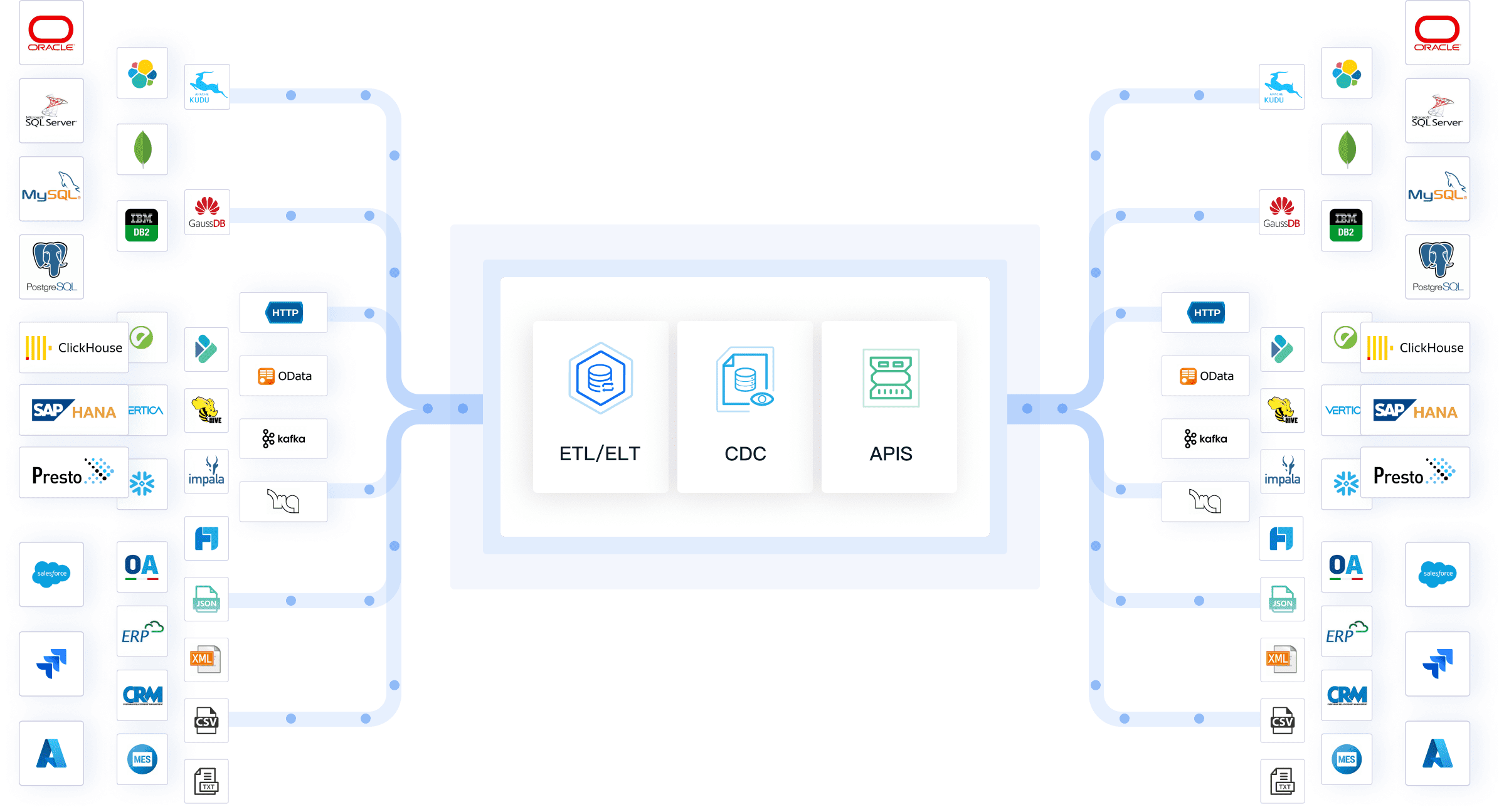
Tip: Combining tools like FineBI and FineDataLink can enhance your HR analytics strategy by providing both visualization and integration capabilities. This ensures that your data is not only accessible but also actionable.
Benefits of HR Analytics for Organizations
Improving Recruitment and Talent Acquisition
HR analytics transforms your hiring process by providing actionable insights that improve efficiency and effectiveness. By analyzing metrics like time-to-fill and quality of hire, you can identify bottlenecks and refine your talent acquisition strategies. For example, tracking time-to-fill helps you measure how quickly positions are filled, while quality-of-hire metrics assess the performance and fit of new employees.
Predictive analytics plays a crucial role in aligning candidates with your company culture. It enables you to forecast which applicants are most likely to succeed in specific roles. This data-driven approach reduces hiring risks and ensures that your recruitment efforts yield long-term benefits.
| Metric | Description |
|---|---|
| Time-to-fill | Measures the time taken to fill a position, indicating recruitment efficiency. |
| Quality of hire | Assesses the performance and fit of new hires, reflecting recruitment success. |
By leveraging HR analytics, you can streamline your hiring process and attract top talent. This not only saves time but also enhances the overall quality of your workforce.
Enhancing Employee Retention Strategies
Retention is a critical aspect of workforce management, and HR analytics provides the tools to address it effectively. By analyzing attrition rates and employee engagement scores, you can identify at-risk employees and implement targeted retention strategies. For instance, predictive analytics can forecast turnover risks, allowing you to take proactive measures to retain valuable team members.
Employee engagement surveys offer insights into satisfaction levels and workplace morale. High engagement often correlates with lower turnover rates and increased productivity. Regularly monitoring these metrics helps you address concerns before they escalate, fostering a positive work environment.
- Predictive analytics can identify at-risk employees, enabling tailored retention strategies.
- Data-driven insights enhance employee satisfaction, reducing turnover and improving stability.
HR analytics empowers you to create a workplace where employees feel valued and motivated. This not only boosts retention but also contributes to long-term organizational success.
Optimizing Workforce Planning and Productivity
HR analytics enables you to optimize workforce planning by analyzing productivity metrics and forecasting future needs. Metrics like employee performance scores and cost of lost productivity provide valuable insights into how your workforce operates. For example, tracking productivity levels helps you identify areas for improvement, while analyzing absences reveals their financial impact on your business.
| Metric | Evidence |
|---|---|
| Productivity Increase | 10-15% average increase reported by companies leveraging HR analytics |
| Reduced Turnover Costs | Up to 50% reduction in turnover-related costs reported by firms using data-driven HR practices |
| Performance Improvements | 20% increase in employee output linked to continuous performance management systems |
HR analytics also supports strategic workforce planning by predicting future demands. This ensures that you allocate resources effectively and avoid skill shortages. By leveraging analytics, you can enhance operational efficiency and drive productivity gains across your organization.
HR analytics is more than just a tool; it’s a strategic asset that helps you optimize recruitment, retention, and workforce planning. By adopting a data-driven approach, you can unlock new opportunities and achieve sustainable growth.
Data-Driven Leadership and Strategic Insights
HR analytics empowers leaders to make informed decisions that align with organizational goals. By analyzing data, you can uncover patterns and trends that might otherwise go unnoticed. These insights help you identify opportunities for growth, address challenges, and improve overall workforce performance. For example, analyzing employee engagement data can reveal areas where morale is low, allowing you to implement targeted initiatives to boost satisfaction.
Data-driven leadership also enhances transparency and accountability. When you base decisions on analytics, you can justify your strategies with concrete evidence. This approach builds trust among employees and stakeholders, as they see that decisions are rooted in facts rather than assumptions. For instance, using HR analytics to track performance metrics ensures that promotions and rewards are fair and merit-based.
Moreover, HR analytics enables you to align workforce strategies with broader business objectives. By leveraging predictive analytics, you can forecast future workforce needs and plan accordingly. This ensures that your organization remains agile and competitive in a rapidly changing business environment. For example, if analytics predict a skill gap in a critical area, you can proactively invest in training programs to address it.
Tip: Use tools like FineBI to visualize data and generate actionable insights. This makes it easier to communicate findings to your team and drive strategic decisions.
Measuring ROI and Cost Optimization
HR analytics plays a crucial role in measuring the return on investment (ROI) of HR initiatives. By tracking key metrics, you can evaluate the effectiveness of programs such as training, recruitment, and employee engagement. For instance, analyzing the cost per hire alongside the quality of hire helps you determine whether your recruitment strategies are delivering value.
Cost optimization is another significant benefit of HR analytics. By identifying inefficiencies, you can allocate resources more effectively and reduce unnecessary expenses. For example, analyzing overtime data might reveal patterns of overwork in specific departments. Addressing these issues can improve productivity while reducing costs associated with burnout and turnover.
Predictive analytics further enhances your ability to optimize costs. By forecasting trends such as turnover rates or absenteeism, you can take proactive measures to mitigate their financial impact. For example, if analytics indicate a high risk of turnover among top performers, you can implement retention strategies to avoid the costs of replacing them. Below is the interactive demo of staff turnover rate analysis report created by FineBI, click to experience it.
Implementing HR Analytics in Your Business
Step 1: Define Clear HR Analytics Goals
The first step in implementing HR analytics is to establish clear goals. You need to identify what you want to achieve with your analytics efforts. For example, are you looking to reduce employee turnover, improve recruitment efficiency, or enhance workforce productivity? Defining these objectives ensures that your HR analytics strategy aligns with your business priorities.
Start by setting measurable key performance indicators (KPIs) for your HR processes. These KPIs might include metrics like time-to-hire, employee engagement scores, or retention rates. Collaborate with stakeholders across departments to ensure these goals reflect the broader organizational vision. This alignment helps you focus your analytics efforts on areas that deliver the most value.
Tip: Use HR dashboards to track your KPIs in real time. Tools like FineBI can help you visualize these metrics, making it easier to monitor progress and adjust strategies as needed.
Step 2: Collect and Organize HR Data
Once you’ve defined your goals, the next step is to gather and organize your HR data. Start by conducting an audit of your existing data sources. These might include employee performance records, recruitment data, and engagement survey results. Ensure that the data you collect is accurate, consistent, and up-to-date.
Establishing a data governance program can help maintain data quality. Collaborate with IT and other departments to standardize data definitions and formats. This ensures that everyone in your organization interprets the data in the same way. For example, aligning definitions for terms like "employee turnover" or "time-to-fill" avoids confusion and enhances the reliability of your analytics.
Organized data serves as the foundation for effective HR analytics. By consolidating information from multiple sources, you can create a comprehensive view of your workforce. Integration solutions like FineDataLink simplify this process by synchronizing data across systems in real time. This ensures that your analytics efforts are based on accurate and actionable information.
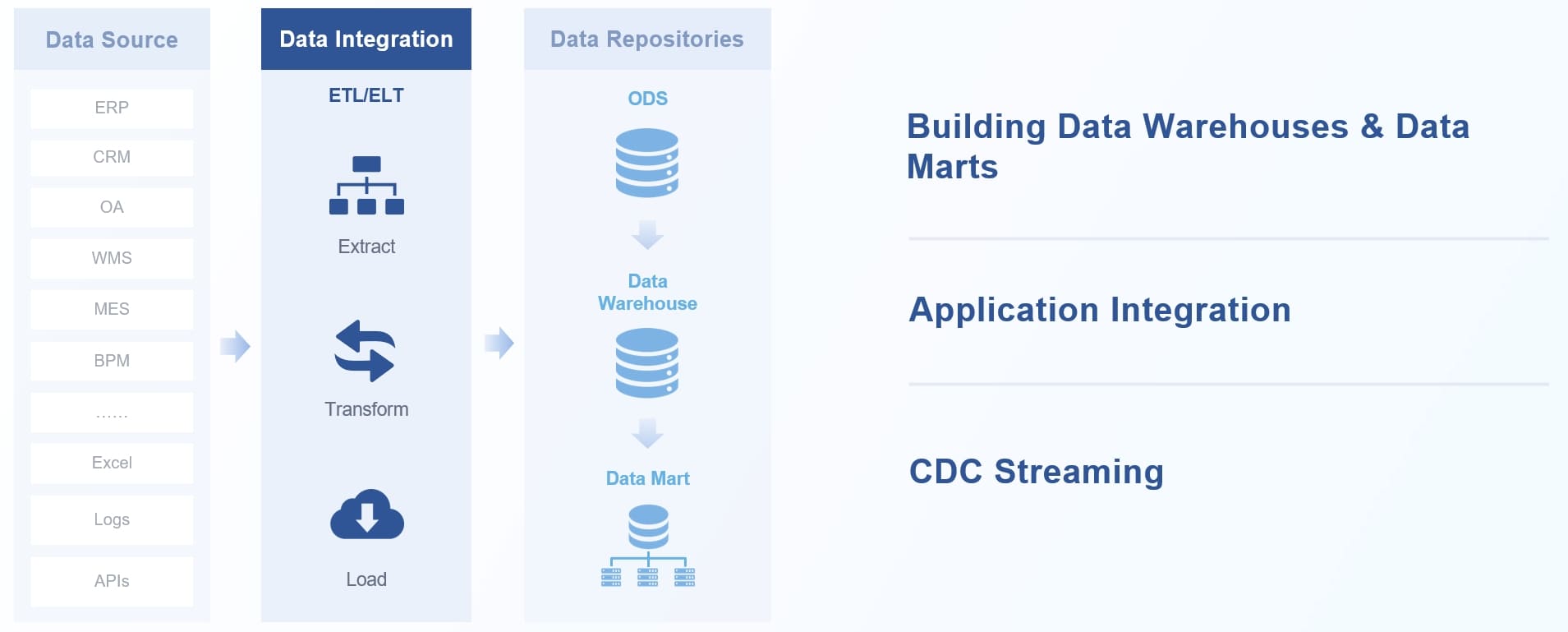
Step 3: Leverage Tools Like FineBI for Analysis
With your data in place, it’s time to analyze it using advanced tools. FineBI is an excellent choice for HR analytics. Its user-friendly interface allows you to explore data without requiring technical expertise. You can create interactive dashboards that display key HR metrics, such as employee engagement trends or recruitment effectiveness.
FineBI’s data visualization capabilities make it easier to identify patterns and insights. For instance, you can use its drag-and-drop functionality to compare turnover rates across departments or track the impact of training programs on productivity. These insights enable you to make informed decisions that align with your HR goals.
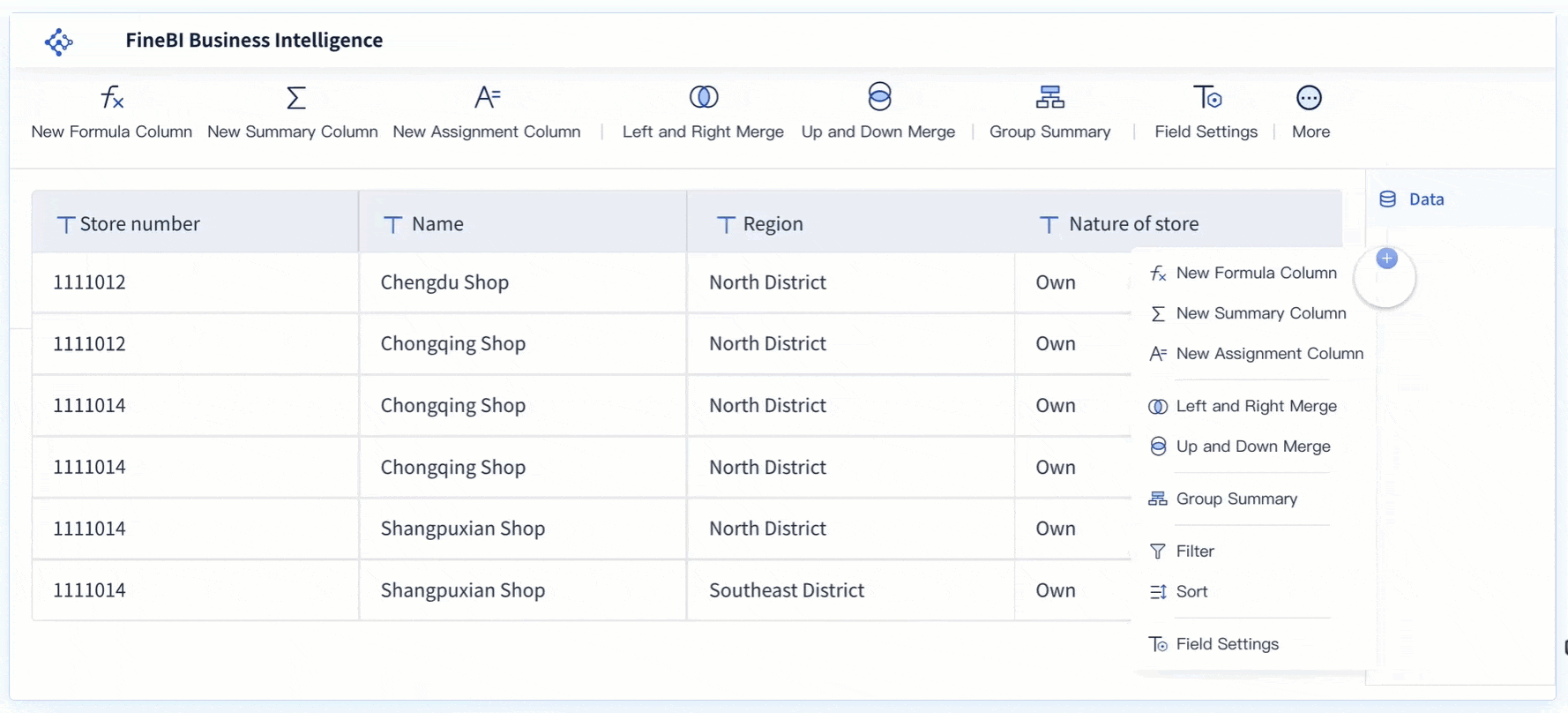
Additionally, FineBI supports real-time analysis, allowing you to respond quickly to emerging trends. For example, if engagement scores drop in a specific team, you can address the issue immediately. By leveraging tools like FineBI, you can transform raw data into actionable insights that drive meaningful change in your organization.
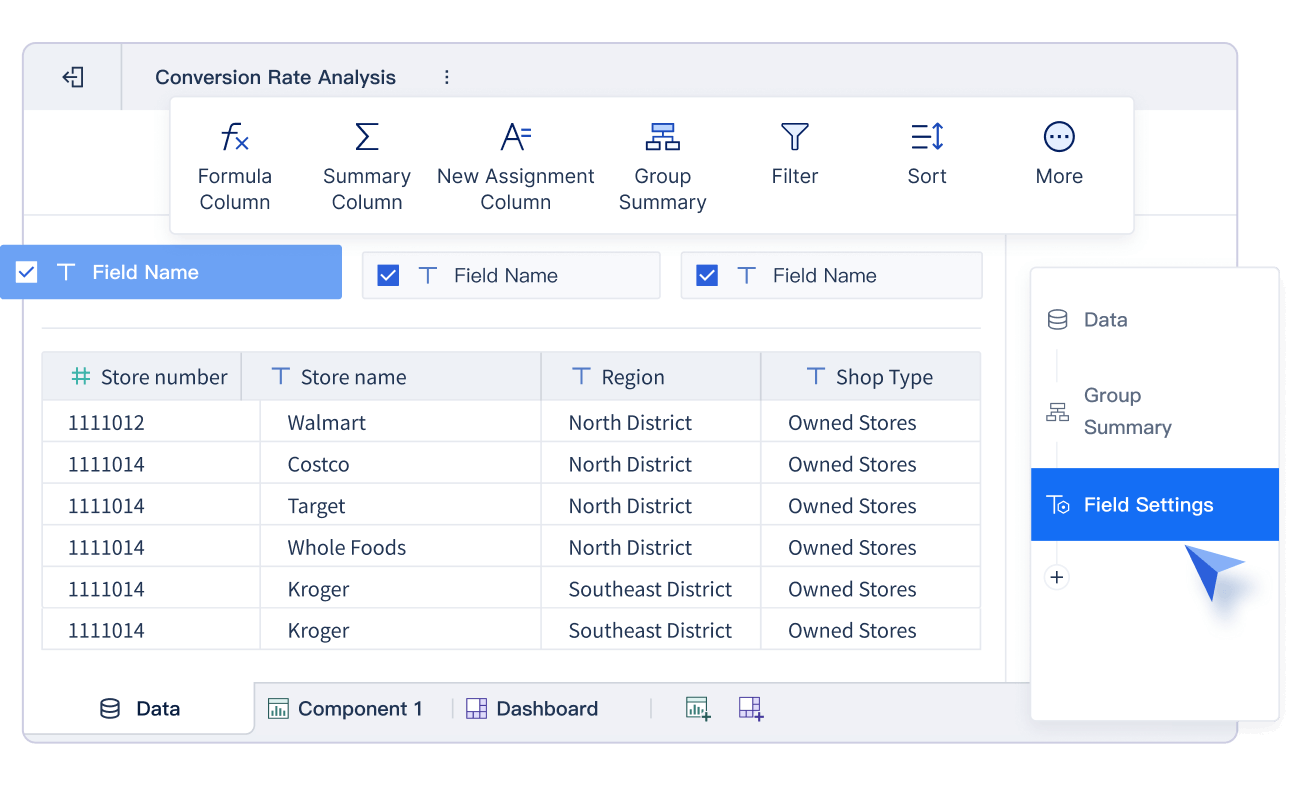
Note: Combining FineBI with FineDataLink enhances your analytics capabilities. While FineBI focuses on visualization, FineDataLink ensures that your data is accurate and up-to-date, creating a seamless analytics workflow.
Step 4: Build a Skilled HR Analytics Team
To harness the full potential of HR analytics, you need a skilled team. Start by identifying the key roles necessary for your analytics efforts. These roles typically include data analysts, HR specialists, and IT professionals. Each member brings unique expertise to the table, ensuring a comprehensive approach to data analysis.
1. Define Roles and Responsibilities: Clearly outline the responsibilities of each team member. Data analysts focus on interpreting data, while HR specialists provide insights into workforce trends. IT professionals ensure the technical infrastructure supports your analytics needs.
2. Invest in Training: Equip your team with the necessary skills. Offer training in data analysis tools like FineBI and integration solutions such as FineDataLink. This investment enhances their ability to generate actionable insights.
3. Foster Collaboration: Encourage collaboration among team members. Regular meetings and open communication channels help align efforts and share insights. This teamwork ensures that your HR analytics strategy remains cohesive and effective.
Tip: Consider cross-training team members. This approach broadens their skill sets and enhances their ability to tackle diverse analytics challenges.
Step 5: Generate Insights and Apply Them
Once your team is in place, focus on generating insights from your HR data. Use analytics tools to identify patterns and trends. For example, analyze employee engagement scores to pinpoint areas needing improvement.
1. Prioritize Key Metrics: Focus on metrics that align with your business goals. These might include turnover rates, recruitment efficiency, or employee satisfaction levels. Prioritizing these metrics ensures that your analytics efforts drive meaningful change.
2. Translate Insights into Action: Use the insights you gather to inform HR strategies. For instance, if analytics reveal high turnover in a department, implement targeted retention initiatives. This proactive approach addresses issues before they escalate.
3. Communicate Findings: Share insights with stakeholders across your organization. Use data visualization tools like FineBI to present findings clearly. This transparency fosters buy-in and supports data-driven decision-making.

Step 6: Monitor and Refine Your HR Analytics Strategy
Monitoring your HR analytics strategy is crucial for ongoing success. Regularly review your analytics processes to ensure they remain aligned with your business objectives.
1. Set Review Intervals: Establish regular intervals for reviewing your analytics strategy. This might be quarterly or bi-annually, depending on your organization's needs. Regular reviews help you stay on track and adapt to changing circumstances.
2. Gather Feedback: Solicit feedback from team members and stakeholders. Their insights can highlight areas for improvement and ensure your strategy remains relevant.
3. Refine and Adjust: Use feedback and performance data to refine your strategy. Adjust your focus as needed to address emerging challenges or opportunities. This flexibility ensures that your HR analytics efforts continue to deliver value.
Note: Continuous improvement is key. By regularly refining your strategy, you can maintain a competitive edge and drive long-term success.
Real-World Applications of HR Analytics
Case Study: Using Predictive Analytics for Employee Retention
Employee retention is a critical challenge for many organizations. Predictive analytics offers a powerful solution by identifying employees at risk of leaving. For example, Company A used a predictive model with 200 attributes to address high turnover rates, which were 3-4% above target. This approach led to a 2-3% drop in attrition, saving the company between $8 million and $10 million. Similarly, IBM applied an algorithm powered by Watson ML to analyze employee sentiment and reduce turnover in critical roles. Over four years, this initiative resulted in a 25% reduction in turnover and saved $300 million.
Nielsen also leveraged predictive analytics to address high flight risks among first-year employees. By analyzing over 20 variables, the company identified high-risk employees and moved 40% of them to new roles. This strategy increased retention by 48%. These examples demonstrate how HR analytics can transform retention strategies, saving costs and improving workforce stability.
| Company | Problem Addressed | Methodology | Outcome | Financial Impact |
|---|---|---|---|---|
| Company A | High turnover (3-4% above target) | Predictive model with 200 attributes | 2-3% drop in attrition | $8,000,000 to $10,000,000 |
| IBM | High turnover in critical roles | Algorithm using Watson ML and sentiment analysis | 25% reduction in turnover | $300,000,000 over four years |
| Nielsen | High flight risk in first-year employees | Predictive model with 20+ variables | 40% of high-risk employees moved to new roles, 48% increased retention | N/A |
Case Study: Streamlining Recruitment with Data Insights
Recruitment processes often face inefficiencies that delay hiring and increase costs. HR analytics can streamline these processes by providing actionable insights. For instance, analyzing application conversion rates helps you identify bottlenecks in your hiring pipeline. By addressing these issues, you can attract top talent more effectively.
Predictive analytics also plays a role in improving recruitment outcomes. It enables you to forecast which candidates are most likely to succeed in specific roles. This approach reduces hiring risks and ensures a better fit between employees and organizational needs. Companies that adopt data-driven recruitment strategies often report faster hiring times and higher-quality hires. By leveraging HR analytics, you can optimize your recruitment efforts and build a stronger workforce.
Case Study: Boosting Engagement Through Survey Analysis
Employee engagement directly impacts productivity and morale. HR analytics allows you to measure engagement levels through surveys and performance reviews. Regularly collecting and analyzing this data helps you identify areas where employees feel disengaged. For example, low engagement scores in a specific department might indicate issues with leadership or workload.
By addressing these concerns, you can implement targeted initiatives to boost morale. For instance, offering professional development opportunities or recognizing employee achievements can improve satisfaction. High engagement levels often correlate with lower turnover rates and increased productivity. Using HR analytics to monitor and enhance engagement ensures a motivated and committed workforce.
The Future of HR Analytics
Emerging Trends in HR Analytics
AI and Machine Learning in HR Analytics
Artificial intelligence (AI) and machine learning (ML) are revolutionizing HR analytics by enabling organizations to process vast amounts of data and uncover actionable insights. These technologies enhance predictive capabilities, allowing you to anticipate workforce trends and make proactive decisions. For instance, AI-powered tools can analyze employee performance data to identify high-potential employees or predict turnover risks. This helps you implement targeted strategies to retain top talent.
AI also streamlines recruitment processes. Tools like IBM Watson Talent have shown a 70% increase in recruiter efficiency by automating candidate screening and matching. This not only saves time but also ensures better alignment between employee skills and job roles. By leveraging AI and ML, you can optimize HR functions and improve overall organizational performance.
Real-Time Workforce Analytics
Real-time workforce analytics is another emerging trend that is transforming how you manage your workforce. With real-time data, you can monitor employee engagement, productivity, and other key metrics as they happen. This allows you to respond quickly to issues and make data-driven decisions that align with your business goals.
For example, real-time analytics can help you identify sudden drops in engagement within specific teams. Addressing these issues immediately prevents larger problems, such as decreased morale or increased turnover. By integrating real-time analytics into your HR strategy, you can enhance agility and maintain a competitive edge.
| Source | Statistic/Trend | Impact on HR Analytics |
|---|---|---|
| Deloitte | 71% of companies prioritize people analytics | Growing recognition of data-driven HR practices |
| IBM | Organizations using predictive analytics are 2.2 times more likely to have higher revenue growth | Anticipate talent needs and optimize HR strategies |
| Gartner | By 2022, 90% of large organizations will have a Chief Data Officer | Increasing importance of data analytics in HR |
| IBM Watson Talent | AI in recruitment yields a 70% increase in recruiter efficiency | Enhanced recruitment processes |
| PwC | AI for talent acquisition can reduce turnover rates by 35% | Better alignment between employee skills and roles |
| PwC | By 2025, AI-powered HR functions will provide real-time insights | Anticipate workforce needs and improve efficiency |
| Case Studies (IBM, Google) | Predictive analytics led to a 32% decrease in employee turnover rates | Positive organizational outcomes and enhanced employee experience |
Challenges and Opportunities in HR Analytics
While HR analytics offers immense potential, it also presents challenges. One major hurdle is data integration. Many organizations struggle to consolidate data from multiple sources, leading to inconsistencies and gaps. Tools like FineDataLink address this issue by synchronizing data in real time, ensuring accuracy and reliability.
Another challenge is the skills gap. Implementing advanced analytics requires expertise in data analysis and interpretation. Building a skilled HR analytics team is essential for overcoming this barrier. Investing in training and leveraging user-friendly tools like FineBI can help bridge this gap.
Despite these challenges, the opportunities are vast. HR analytics enables you to enhance decision-making, improve employee satisfaction, and optimize workforce planning. By addressing the challenges proactively, you can unlock the full potential of HR analytics and drive organizational success.
Recruitment Platforms: Develop Differentiated Operational Strategies Through User Segmentation
Recruitment platforms thrive when they understand their users. By segmenting users into distinct groups, you can develop tailored strategies that meet their unique needs. This approach ensures that your platform delivers personalized experiences, increasing user satisfaction and engagement.
The Overview of User segmentation
User segmentation divides your audience into categories based on shared characteristics. These categories help you identify patterns and preferences, enabling you to optimize your platform's operations. For example, geographic segmentation groups users by location, allowing you to address regional hiring trends. In contrast, behavioral segmentation focuses on user actions, helping you understand how candidates interact with your platform.
| Segmentation Type | Description | Benefits |
|---|---|---|
| Geographic Segmentation | Groups users based on their location, from countries to neighborhoods. | Connects with unique needs and preferences of different locations. |
| Demographic Segmentation | Categorizes users by personal attributes like age, education, and income. | Allows businesses to cater to distinct purchasing capacities. |
| Psychographic Segmentation | Divides users based on personalities, values, interests, and lifestyles. | Helps craft messages and products that resonate on a personal level. |
| Behavioral Segmentation | Focuses on user actions, interactions, and patterns on a platform. | Provides insights into user preferences, habits, and pain points. |
| Firmographic Segmentation | In B2B markets, groups companies by attributes like size. | Understands scale of operations and specific needs tied to company size. |
| Transactional Segmentation | Analyzes users based on their transaction history. | Tailors offers and promotions to specific buying behaviors. |
| Technographic Segmentation | Segments users based on their technology usage and preferences. | Optimizes digital platforms for preferred devices, enhancing user experience. |
Each segmentation type offers unique advantages. For instance, psychographic segmentation allows you to align your messaging with users' values and interests. This connection fosters trust and loyalty. Similarly, transactional segmentation helps you analyze candidates' application histories, enabling you to recommend relevant job opportunities.
Behavioral segmentation is particularly valuable for recruitment platforms. By studying user interactions, you can identify pain points in the application process. Addressing these issues improves the user experience and increases application completion rates. For example, if data shows that users abandon applications at a specific step, simplifying that step can boost engagement.
Technographic segmentation also plays a crucial role. Understanding users' preferred devices and platforms helps you optimize your website or app. A seamless digital experience ensures that users can access your services without frustration, enhancing their overall satisfaction.
Tip: Combining multiple segmentation types can amplify your results. For example, pairing behavioral and demographic segmentation allows you to create targeted campaigns that resonate with specific user groups.
Segment Users Based on Their Capabilities
Recruitment platforms can optimize their strategies by segmenting users based on their skills and experience levels. This approach allows you to tailor job recommendations, training programs, and communication strategies to meet the unique needs of each group. For example, younger job seekers (ages 16-24) often require entry-level opportunities and skill-building resources, while mid-career professionals (ages 35-44) may prioritize leadership roles and career advancement.
Segmenting users by capabilities also enhances candidate engagement. Companies like Sodexo have achieved an 89% engagement rate by applying talent segmentation practices. Similarly, Philips doubled industry averages for email marketing metrics through highly segmented campaigns. These examples highlight how segmentation improves the effectiveness of recruitment efforts.
Segment Users Based on Their Job-Seeking Status
Understanding the job-seeking status of users helps you refine your recruitment strategies. Active job seekers, for instance, are more likely to engage with job postings and complete applications. Passive candidates, on the other hand, may respond better to personalized outreach or employer branding efforts.
Recruitment platforms can track metrics such as application completion rates, offer acceptance rates, and retention rates to evaluate the effectiveness of their strategies. For example, a U.S. tech firm sourced over 40% of IT hires from career microsites, reducing hiring costs by 60%. By analyzing these metrics, you can identify the most effective channels for sourcing high-quality candidates.
Additionally, data-driven tools like hr analytics play a crucial role in segmenting users and predicting their behavior. These insights enable you to create targeted strategies that improve employee retention and streamline the hiring process. A well-segmented approach ensures that you connect with the right candidates at the right time, maximizing recruitment efficiency.
By leveraging user segmentation, you can develop differentiated operational strategies that set your recruitment platform apart. This approach not only improves user satisfaction but also drives better hiring outcomes for your clients.
HR analytics plays a vital role in modern business success by enabling data-driven decisions that improve workforce management. Tools like FineBI and FineDataLink simplify this process by offering advanced visualization and seamless data integration. To get started, define clear goals, collect accurate HR data, and use tools to analyze key metrics. Focus on measurable indicators like turnover rates, time-to-fill, and employee engagement to align HR strategies with business objectives.
| Metric | Description |
|---|---|
| Turnover and Retention Rates | Quantifying employee transitions to refine recruitment and retention strategies. |
| Time-to-Fill and Cost-per-Hire | Optimizing recruitment processes for operational efficiency. |
| Employee Engagement and Productivity | Directly linking HR initiatives to the overall business performance. |
By adopting HR analytics, you can unlock new opportunities, enhance productivity, and drive sustainable growth.
Click the banner below to try FineBI for free and empower your enterprise to transform data into productivity!
Continue Reading About HR Analytics
HR Reporting & Dashboard Templates, Example, Structure
HR Dashboard: Everything You Need To Know
FAQ
What is HR analytics, and why is it important?
HR analytics involves analyzing workforce data to improve decision-making. It helps you optimize recruitment, retention, and productivity. By using HR analytics, you can align workforce strategies with business goals and gain a competitive edge.
How does HR analytics differ from traditional HR practices?
Traditional HR relies on intuition and experience. HR analytics uses data to uncover patterns and predict outcomes. This approach ensures that your decisions are evidence-based and more effective.
What types of data are used in HR analytics?
HR analytics uses data like employee performance metrics, recruitment statistics, and engagement surveys. These data points help you identify trends, predict challenges, and implement targeted strategies.
How can tools like FineBI and FineDataLink enhance HR analytics?
FineBI simplifies data visualization, making insights easy to understand. FineDataLink integrates data from multiple sources, ensuring accuracy. Together, they provide a seamless solution for effective HR analytics.
Can small businesses benefit from HR analytics?
Yes, small businesses can use HR analytics to improve hiring, reduce turnover, and boost productivity. Tools like FineBI offer user-friendly features that make analytics accessible, even for smaller teams.
How does predictive analytics improve employee retention?
Predictive analytics identifies employees at risk of leaving by analyzing factors like engagement scores and performance trends. This allows you to implement proactive retention strategies and reduce turnover.
What skills are needed to implement HR analytics?
You need skills in data analysis, visualization, and interpretation. Familiarity with tools like FineBI and FineDataLink can simplify the process. Building a team with diverse expertise ensures success.
How do you measure the ROI of HR analytics?
Track metrics like cost-per-hire, turnover rates, and productivity improvements. These indicators show how HR analytics impacts your bottom line and helps you optimize resource allocation.
Tip: Start small by focusing on one or two key metrics. Gradually expand your analytics efforts as you gain confidence.

The Author
Lewis
Senior Data Analyst at FanRuan
Related Articles
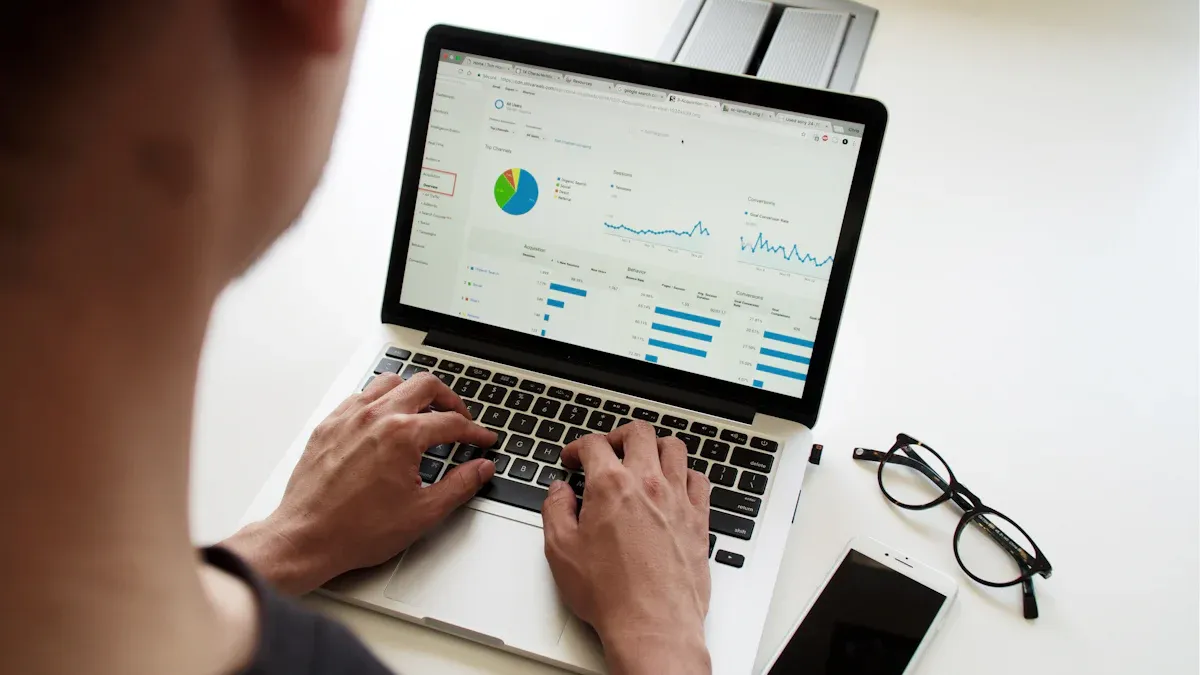
11 Best Tools for Research Analysis for Academics
Compare the 11 best tools for research analysis to boost academic and professional research efficiency, data management, and collaboration.
Lewis
Dec 11, 2025

10 Best Market Research Data Analysis Tools to Try This Year
See the top 10 market research data analysis tools to boost insights, streamline workflows, and make smarter business decisions this year.
Lewis
Dec 11, 2025
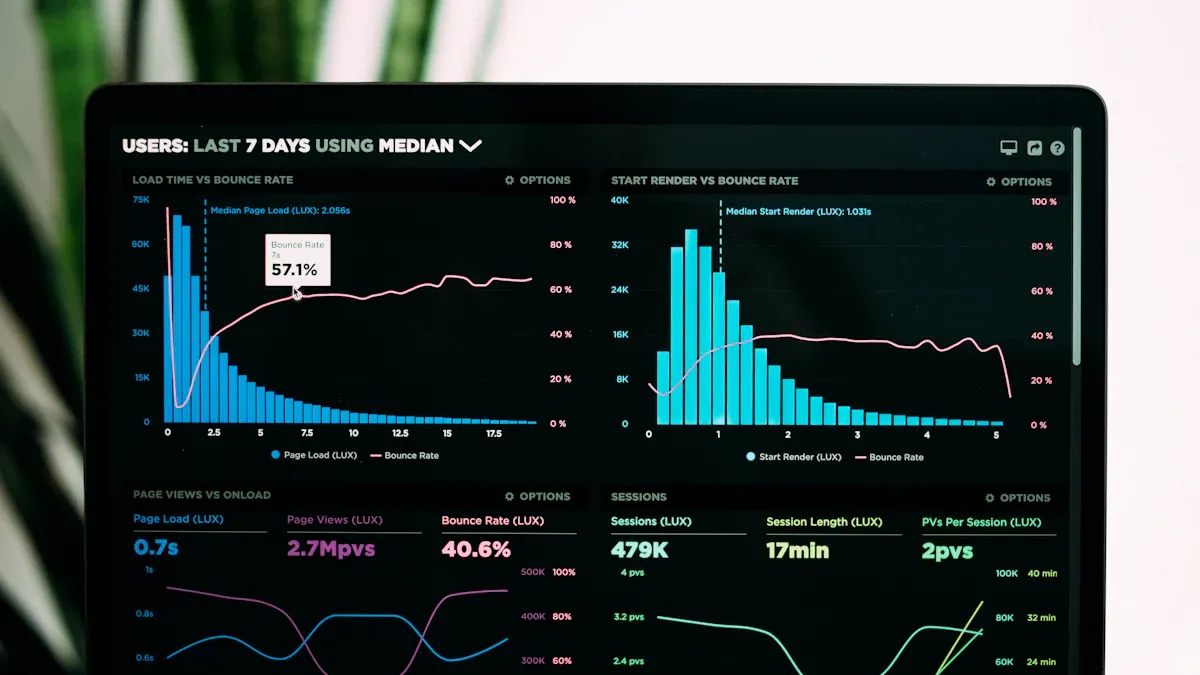
Top Financial Data Analysis Tools You Should Know
Compare top financial data analysis tools to boost accuracy, automate reporting, and empower your finance team with real-time business insights.
Lewis
Dec 11, 2025
